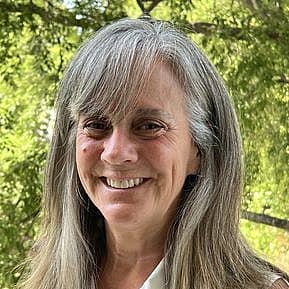Why It Matters to the Epidemic of Struggling Teens & Young Adults
Inspired and grateful. That’s not exactly how I usually leave professional conferences. If you work in a field where trade or professional conferences are a regular part of your year, you likely know what I mean. Trade the coat and tie or business casual dress for fleece and Birkenstocks. Swap the iPhone and superficial networking for meaningful conversation and connection. But don’t let the groovy people or kumbaya vibe fool you. There’s not just cool stuff going on in wilderness treatment. There’s research-informed best practices and highly effective treatment happening. That’s my takeaway from the wilderness symposium held in Asheville this April.
If you don’t already know, therapeutic wilderness is the sometimes controversial and often misunderstood treatment option for adolescents and young adults whose emotional and behavioral struggles cause significant disruption to their wellbeing and ability to function. For the layperson not familiar with private treatment options outside of the traditional in-insurance network therapeutic interventions, think of wilderness as a kind of outward bound program and add good therapy.
It’s not that I didn’t know wilderness is an effective treatment option for struggling adolescents and young adults before my trip to Asheville, one of the several epicenters of the country’s best therapeutic programs. I’d been a believer for a long time. It’s not that I didn’t know that outdoor behavioral health care is a researched field. I’d attended presentations and read studies. And let’s not discount my direct experience of recommending wilderness to the right young person and seeing firsthand its transformational power. But knowing something or having your own anecdotal evidence that something works is just different enough from being exposed to that same phenomenon through a more compelling and nuanced lens to re-energize and deepen your convictions.
Hope these days isn’t easily sustained because of what we are seeing more and more of in our offices. Wounded kids, overwhelmed by anxiety, in failure or standing at its precipice, unequipped to face environmental demands, self-medicating or withdrawing, without the resilience to withstand the distress of a fast-paced life whose success is measured by external markers of achievement and prestige. We’ve never been a prevention-based society; we prefer to treat an illness rather than head it off. The good news for a lot of our anxious kids is that wilderness works and it’s a good place to start building those foundational skills — the prerequisites for a well-adjusted, independent adult life — that so many of our kids are missing.
Some of the most recent and increasingly prolific research on wilderness on show at the symposium in Asheville may help us practitioners effectively reassure parents that these treatment programs are safe, that they actually work, and they may be worth the cost.
Drs. Michael Gass and Anita Tucker, our neighbors at the University of New Hampshire, along with their amazing graduate students, are among the premier researchers in this area. Do your homework and you will see that they are leading the charge to answer these questions of safety, efficacy, and value by looking at incidents of injuries, illness, therapeutic holds, and runaways, as well as longitudinal outcomes (where are wilderness participants after treatment), the impact on family functioning, the value added of adventure experience to therapy, and whether psycho-social maturity occurs in wilderness therapy, among other topics. The results are compelling and the focus now of numerous refereed journals, which is a fancy way of saying that these studies are validated by the most sophisticated and heavily vetted methods currently utilized in social science. It’s the real deal when scholarly journals say it is. The findings are so compelling on the side of establishing therapeutic wilderness’ efficacy that insurance companies are starting to take notice. There’s nothing like an emerging critical mass of validated studies to help mainstream and democratize a treatment option that has been available only to those who can afford it.
Wilderness, no matter how effective a treatment it is proving to be, is still no “silver bullet” or a panacea. And it can’t be assumed that all wilderness programs offer the same level of quality or effectively serve the same demographic (that’s why seeking the advice of professionals who know these programs is so critical for parents). But for the right young person at the right time in his or her struggles, it is a viable (and often superior) alternative to traditional treatment and the right initial step on the road back to emotional and behavioral health.
So a big thank you to the field itself and to the researchers who are bringing these courageous, intelligent, highly trained, creative, and selfless practitioners’ work increasingly into focus. Next time I am across from a heartbroken mom or dad whose child is suffering, there’s hope — a more well-informed, research-based hope — to be offered.


